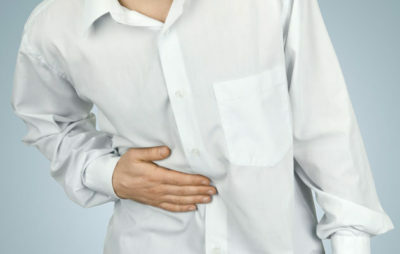Pseudotumor pancreatitis - a chronic form of the disease in the running state where the inflammation of the pancreas (RV) lead to the head body tumors. When pancreatitis occurs stagnation of enzymes in the pancreas, which begin to destroy the organ itself, eroding it. Toxins produced by the decay of cancer through blood fall to other organs and disrupt their activities. In the absence of proper treatment of the disease becomes chronic and develops into pseudotumor pancreatitis. The disease is more common in men up to 40 years. Women pathology provoked mainly cholelithiasis and is called biliary pancreatitis.

The etiology of the phenomenon
The main causes of the disease:
- alcohol abuse, "heavy" food, smoking;
- long-term use of drugs;
- hereditary factor;
- poisoning by chemicals and traumas of the intestine;
- previously transferred operation associated with the gastrointestinal tract;
- complication of chronic pancreatitis;
- various stomach and bowel disease, gallstones, liver and biliary tract, etc .;
- heart failure, and pathologies of the vascular system;
- infectious diseases (viral hepatitis, smallpox, tonsillitis, sepsis, etc.);
- allergy;
- helminthiasis;
- diabetes.
It is important to note that 80% of the cause of development of pancreatitis are psevdotumuroznogo gallbladder disease, liver and bile ducts.
symptomatic manifestations
The main symptoms of pseudotumor pancreatitis (PTP):
- regular girdle pain localized in the right upper quadrant, worse after eating, and as the disease progresses;
- violation of the secretory function of the pancreas;
- change the size of the prostate (usually increase);
- weight loss;
- yellowness of the skin, the eyes, dark urine and lightening of stool, itching;
- violation of a chair;
- heaviness in the stomach after a fatty meal, alcohol;
- nausea and vomiting;
- bad digestion, and visible remnants of food in the stool;
- endocrine and exocrine pancreatic insufficiency - reduced production of hormones and enzymes involved in the functioning of the human organism.
Unpleasant feature is that the symptoms are observed at a sufficiently advanced stage of the disease. Over time in the affected parts of the pancreas may occur seal oncology aetiologies, capable observed subhepatic portal hypertension (increased pressure in the portal vein due thrombosis). Thus disturbed flow of bile from the liver into the duodenum 12, which leads to the development of obturation (machining) jaundice. Pancreas head deforms and increases significantly in size because cystoma tissue, making it difficult pancreatic secretion yield from the organ and accumulated enzymes begin to corrode and cell wall gland. stagnant bile in the liver and enters the pancreatic juice, increasing its digestive capacity and even more striking pancreas. Due to the fact that the head of the pancreas is associated with the lymphatic system, inflammation of lymph spreads throughout the body.
Types and classification of pancreatitis
There are many types and forms of inflammation of the pancreas. It is very important to facilitate the diagnosis of such diseases as pancreatitis, classification of disease. In medical practice, it is based on the International Classification of Marseilles, which includes the following types of pancreatitis:
- Acute.
- Acute progressive recoverable pancreatic functions.
- Chronic progressive with acute attacks, with a possible partial recovery of cancer. It is also the name of parenhematozny pancreatitis.
- Obstructive, accompanied by the formation of stone deposits seals impaired patency of the biliary ducts of the pancreas and the growth of fibrous tissue.
- Chronic pancreatitis destructive pathological changes gland tissue structure. Sometimes accompanied by a deposit of stones, in the subsequent calcific pancreatitis begins, and it is already necrotic processes. Most affected acini, responsible for the production of enzymes and the process of digestion.
Chronic calculous pancreatitis is characterized by the deposition of salts in the pancreas due to a violation of the chemical composition pancreatic secretions leads to the formation of stones or sand gland ducts, through which the output pancreatic juice. As a result, in place of formation of concretions necrotic processes start prostate tissue. Calculous pancreatitis usually has a poor prognosis due to the fact that the necrosis of tissue body begin to develop cancerous processes.
According to the nature and location of pancreatic lesions following types of pancreatitis:
- Edematous pancreatitis - this is usually the initial form of acute and chronic pancreatitis. Swelling of the covering segments of the pancreas without degenerative changes. More common in men as well as the main cause is alcohol-induced cancer, provoking edema syndrome. Edematous pancreatitis is reversible. With timely treatment and removing puffiness favorable prognosis.
- Parenchymal pancreatitis - the defeat of the entire pancreas, or part of it, accompanied by a breach of exocrine organ activity. Parenchymal pancreatitis is very dangerous for its complications, which may cause the patient's death.
- Infectious pancreatitis develops against the background of a viral infection, generally of viral hepatitis, leading to the defeat of the pancreas causing virus and accelerate the process of scarring of the tissues.
- If low-quality treatment, advanced stage of acute pancreatitis in combination with the RV of infection occurs purulent pancreatitis pancreas. In this form of the disease are observed diffuse purulent lesions of the parenchyma. This requires urgent surgical intervention. Possible death. Purulent inflammation often causes necrotizing pancreatitis, t. E. process of extinction of the affected tissues.
- Launched a form of chronic inflammation of the pancreas can lead to its gradual atrophy. Atrophic pancreatitis fibrotic prostate begins with changes which gradually propagate deep into tissues deforming lobules, interlobular space, the islets of Langerhans, which ultimately leads to hormonal and enzyme deficiency gland. Further defeat ducts and blood vessels contributes bleeding and provokes hemorrhagic pancreatitis. It may be complete or partial. The organ is considerably reduced in size and becomes hryascheobraznym that provokes cirrhosis. The prognosis for this unfavorable.
- Hemorrhagic pancreatitis is a consequence of the destruction of the pancreas vascular system as a result of fibrosis, or corrosion of the vessel walls own enzymes due to ductal obstruction. Thus there are abundant internal bleeding and peritonitis.
- Among the varieties of pancreatic diseases that occur more frequently in women, can be called idiopathic pancreatitis - state, when the transformation of healthy tissue occurs pancreas glands in the body. The reasons for these degenerative changes have not yet been studied. There are several types of idiopathic pancreatitis: early (which manifests itself in 15-20 years), tropical (Found in the inhabitants of tropical countries and is due to deficiency of proteins and minerals), senile (senile).
- pancreatic disease with the compounds and formation of fibrous tissue stones classified as indurativnyy pancreatitis. Progression of the disease leads to blockage of pancreatic duct, thereby causing violation output of pancreatic juice in the intestine. The outcome of this activity is a violation of the digestive system disease 12 duodenal ulcer, liver, gastrointestinal tract. Indurativny pancreatitis develops against the background of the numerous attacks of the acute form.
- The most rare type of pancreatic disease, occurring in medical practice, is autoimmune pancreatitis. It is expressed in failures defense system that increases immunity and immune cells begin to "attack" your own body. Autoimmune pancreatitis is manifested in the defeat not only of the pancreas, but also all the organs associated with it (liver, kidney, lymph nodes, salivary glands, bile channels, gastrointestinal tract). It manifests a set of characteristics common to all types of pancreatitis - jaundice, dyspepsia disorders, enzymatic and hormone deficiency, diabetes, weight loss, general weakness and fatigue and others.
On the stage of development of the disease is divided into the following stages:
- Enzymatic phase (3-5 days) - is the pathogenesis of pancreatic necrosis of the cells in this period (pancreatic), begins the intoxication of the organism endotoxins (Endotoxemia), sometimes there is a violation of vital functions of other organs due to their defeat (multiple organ failure) and endotoxin shock.
- Reactive phase (6-15 days) - characterized by the beginning of inflammatory processes in necrotic zones.
- sequestration Phase (after 2 weeks), - means forming a dead pancreas sections (sekvertov). Distinguish aseptic sekvertatsiyu cystoma and to form a perforation and septic which complicated pyo-necrotic inflammation of the pancreas.
- Initial phase - occurs after the expiration of 6 months after the first signs of illness.
diagnostic measures
Diagnosing PTP starts with finding signs of the disease based on the patient's complaints. Once appointed by the deeper study.
Laboratory tests make it possible to identify the following factors:
- Blood analysis - ESR state and leukocytes, the presence of bilirubin, various enzymes and acids;
- Analysis of urine - the presence of bilirubin, amylase and urobilin;
- scatology - the quality of the digestion of food and the presence of fat.
Instrumental investigations:
- CT;
- Ultrasound of the digestive system;
- X-ray;
- Endoscopic echolocation;
- gastroscopy gallbladder and biliary tract;
- intravenous cholangiography - introduction into vein pancreatic contrast fluid to study permeability ducts, the presence of stones and tumors;
- radionuclide cholecystography - the introduction of contrast agents for subsequent X-ray body, gives a clear picture of the pancreas in the picture;
- Histology - the study of living tissue obtained from a patient for the presence of cancer.
treatment Guidelines
Pancreatitis Treatment consists of several stages. The first of these is drug therapy, it includes:
- antispasmodics decision to eliminate the pain (No-spa, Spazmalgon, Drotaverinum);
- decrease the synthesis of enzymes that destroy gland - prescriptions which reduce the secretion of enzymes (Omeprazole Omez, Contrycal, Ribonuclease etc.);
- receiving exogenous enzymes to restore failure (Pancreatin, Mezim forte, Creon, Gastenorm et al.);
- restoring acid-base balance of the stomach, which is broken with poor digestibility of food (Maalox, Gastal, Almagell);
- replenishing vitamin deficiency due to use of complex substances containing groups A, E, C, D, K and B;
- drugs that stimulate the motility of the gastrointestinal (Motilium, Reglan, Allohol);
- in severe cases and esophageal obstruction designate supporting food by parenteral enter special substances (Alvezin, Aminosol, 10% solutions of potassium chloride and gluconate calcium).
During and after the treatment it is necessary to follow a diet. Table №5 - a diet rich in proteins and carbohydrates. It presupposes the exclusion of oily and spicy foods, more fruits and vegetables, drinking plenty of fluids, and so on. D.
When conservative therapy is ineffective assigned surgery - tumor removal for recovery of the pancreas followed by regular monitoring the course of remission. Useful it will maintain a spa treatment. Radiation therapy is indicated for the detection of cancer processes.
Diet for pancreatitis
The diet should include high content of proteins and vitamins, limiting fat and carbohydrate intake.
Approximate menu when diet №5:
- first courses involve the use of "light" soup with addition of cereals (rice, oatmeal, semolina, buckwheat, barley), vegetable and lean meat;
- second dishes are also prepared from low-fat beef or chicken meat, fish, egg acceptable omelettes;
- allowed to eat wheat pasta meal, crackers, bread daily, a small amount of salad oil;
- very useful for low-fat cottage cheese, kefir, yogurt, cheese, milk;
- of vegetables can be eaten potatoes, beets, carrots, pumpkin, zucchini, eggplant, fruit - sour apples, pears, berries;
- are contraindicated, carbonated and alcoholic drinks are allowed fruit juices, compotes of dried fruit broth hips, weak tea, mineral water;
- of desserts in a limited number we can have pure honey, jam and chocolate, berry mousse and jelly.
All dishes are cooked by boiling or steaming. Meals should be small meals (5-6 times), separate. You can not eat too hot or cold food.
Prediction and prevention of pancreatitis pseudotumor
When timely and appropriate treatment initiated Pseudotumor pancreatitis can predict favorable outcome (up to 80% recovery). Although there are some complications associated with the violation of the endocrine system (nephropathy and angiopathy), but such cases are very rare.
Preventive measures to prevent the occurrence of PCP - moderate alcohol consumption, change harmful drugs means traditional medicine, mandatory treatment of diseases that can trigger the development of pseudotumor pancreatitis, prevention infection viral infections (vaccination, the protective measures, strengthening the immune system), visiting resorts and spas, healthy lifestyle, occupation sports.



